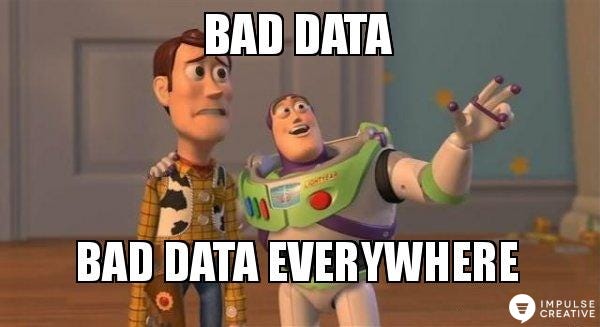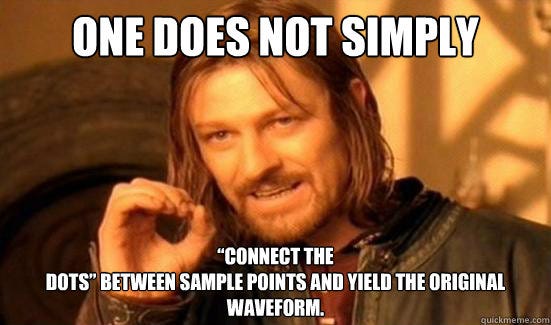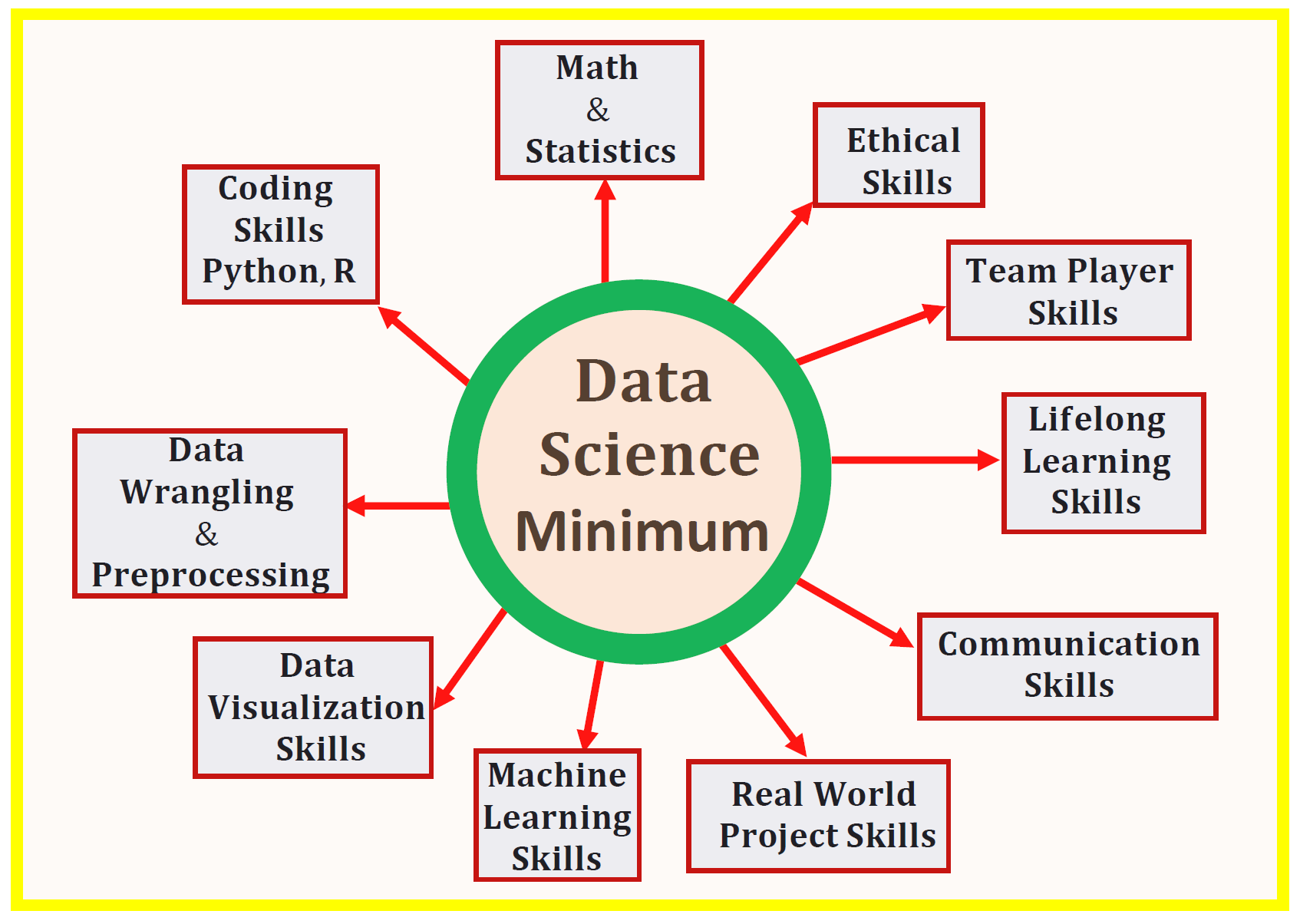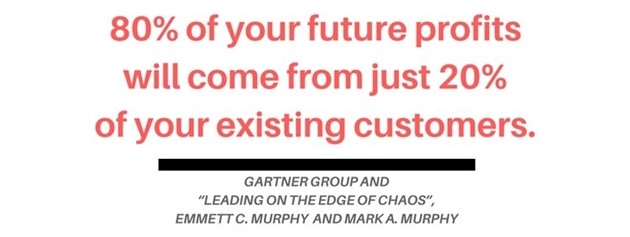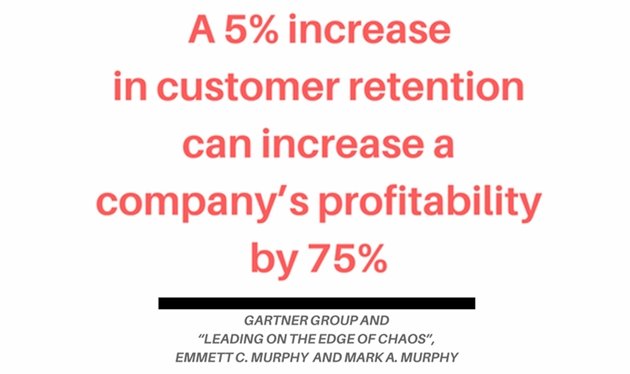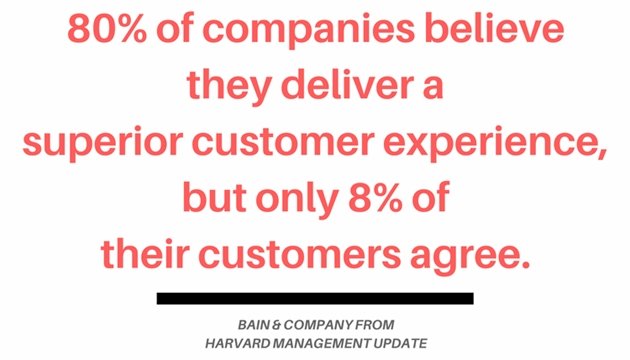By Benjamin Obi Tayo Ph.D.
ata Science is such a broad field that includes several subdivisions like data preparation and exploration; data representation and transformation; data visualization and presentation; predictive analytics; machine learning, etc. For beginners, it’s only natural to raise the following question: What skills do I need to become a data scientist?
This article will discuss 10 essential skills that are necessary for practicing data scientists. These skills could be grouped into 2 categories, namely, technological skills (Math & Statistics, Coding Skills, Data Wrangling & Preprocessing Skills, Data Visualization Skills, Machine Learning Skills,and Real World Project Skills) and soft skills (Communication Skills, Lifelong Learning Skills, Team Player Skills and Ethical Skills).
Data science is a field that is ever-evolving, however mastering the foundations of data science will provide you with the necessary background that you need to pursue advance concepts such as deep learning, artificial intelligence, etc. This article will discuss 10 essential skills for practicing data scientists.
10 Essential Skills You Need to Know to Start Doing Data Science
1. Mathematics and Statistics Skills
(I) Statistics and Probability
Statistics and Probability is used for visualization of features, data preprocessing, feature transformation, data imputation, dimensionality reduction, feature engineering, model evaluation, etc. Here are the topics you need to be familiar with:
a) Mean
b) Median
c) Mode
d) Standard deviation/variance
e) Correlation coefficient and the covariance matrix
f) Probability distributions (Binomial, Poisson, Normal)
g) p-value
h) MSE (mean square error)
i) R2 Score
j) Baye’s Theorem (Precision, Recall, Positive Predictive Value, Negative Predictive Value, Confusion Matrix, ROC Curve)
k) A/B Testing
l) Monte Carlo Simulation
(II) Multivariable Calculus
Most machine learning models are built with a data set having several features or predictors. Hence familiarity with multivariable calculus is extremely important for building a machine learning model. Here are the topics you need to be familiar with:
a) Functions of several variables
b) Derivatives and gradients
c) Step function, Sigmoid function, Logit function, ReLU (Rectified Linear Unit) function
d) Cost function
e) Plotting of functions
f) Minimum and Maximum values of a function
(III) Linear Algebra
Linear algebra is the most important math skill in machine learning. A data set is represented as a matrix. Linear algebra is used in data preprocessing, data transformation, and model evaluation. Here are the topics you need to be familiar with:
a) Vectors
b) Matrices
c) Transpose of a matrix
d) The inverse of a matrix
e) The determinant of a matrix
f) Dot product
g) Eigenvalues
h) Eigenvectors
(IV) Optimization Methods
Most machine learning algorithms perform predictive modeling by minimizing an objective function, thereby learning the weights that must be applied to the testing data in order to obtain the predicted labels. Here are the topics you need to be familiar with:
a) Cost function/Objective function
b) Likelihood function
c) Error function
d) Gradient Descent Algorithm and its variants (e.g. Stochastic Gradient Descent Algorithm)
Find out more about the gradient descent algorithm here: Machine Learning: How the Gradient Descent Algorithm Works.
2. Essential Programming Skills
Programming skills are essential in data science. Since Python and R are considered the 2 most popular programming languages in data science, essential knowledge in both languages are crucial. Some organizations may only require skills in either R or Python, not both.
(I) Skills in Python
Be familiar with basic programming skills in python. Here are the most important packages that you should master how to use:
a) Numpy
b) Pandas
c) Matplotlib
d) Seaborn
e) Scikit-learn
f) PyTorch
(ii) Skills in R
a) Tidyverse
b) Dplyr
c) Ggplot2
d) Caret
e) Stringr
(iii) Skills in Other Programming Languages
Skills in the following programming languages may be required by some organizations or industries:
a) Excel
b) Tableau
c) Hadoop
d) SQL
e) Spark
3. Data Wrangling and Proprocessing Skills
Data is key for any analysis in data science, be it inferential analysis, predictive analysis, or prescriptive analysis. The predictive power of a model depends on the quality of the data that was used in building the model. Data comes in different forms such as text, table, image, voice or video. Most often, data that is used for analysis has to be mined, processed and transformed to render it to a form suitable for further analysis.
i) Data Wrangling: The process of data wrangling is a critical step for any data scientist. Very rarely is data easily accessible in a data science project for analysis. It’s more likely for the data to be in a file, a database, or extracted from documents such as web pages, tweets, or PDFs. Knowing how to wrangle and clean data will enable you to derive critical insights from your data that would otherwise be hidden.
ii) Data Preprocessing: Knowledge about data preprocessing is very important and include topics such as:
a) Dealing with missing data
b) Data imputation
c) Handling categorical data
d) Encoding class labels for classification problems
e) Techniques of feature transformation and dimensionality reduction such as Principal Component Analysis (PCA) and Linear Discriminant Analysis (LDA).
4. Data Visualization Skills
Understand the essential components of a good data visualization.
a) Data Component: An important first step in deciding how to visualize data is to know what type of data it is, e.g. categorical data, discrete data, continuous data, time series data, etc.
b) Geometric Component: Here is where you decide what kind of visualization is suitable for your data, e.g. scatter plot, line graphs, barplots, histograms, qqplots, smooth densities, boxplots, pairplots, heatmaps, etc.
c) Mapping Component: Here you need to decide what variable to use as your x-variable and what to use as your y-variable. This is important especially when your dataset is multi-dimensional with several features.
d) Scale Component: Here you decide what kind of scales to use, e.g. linear scale, log scale, etc.
e) Labels Component: This include things like axes labels, titles, legends, font size to use, etc.
f) Ethical Component: Here, you want to make sure your visualization tells the true story. You need to be aware of your actions when cleaning, summarizing, manipulating and producing a data visualization and ensure you aren’t using your visualization to mislead or manipulate your audience.
5. Basic Machine Learning Skills
Machine Learning is a very important branch of data science. It is important to understand the machine learning framework: Problem Framing; Data Analysis; Model Building, Testing &Evaluation; and Model Application. Find out more about the machine learning framework from here: The Machine Learning Process.
The following are important machine learning algorithms to be familiar with.
i) Supervised Learning (Continuous Variable Prediction)
a) Basic regression
b) Multiregression analysis
c) Regularized regression
ii) Supervised Learning (Discrete Variable Prediction)
a) Logistic Regression Classifier
b) Support Vector Machine Classifier
c) K-nearest neighbor (KNN) Classifier
d) Decision Tree Classifier
e) Random Forest Classifier
iii) Unsupervised Learning
a) Kmeans clustering algorithm
6. Skills from Real World Capstone Data Science Projects
Skills acquired from course work alone will not make your a data scientist. A qualified data scientist must be able to demonstrate evidence of successful completion of a real world data science project that includes every stages in data science and machine learning process such as problem framing, data acquisition and analysis, model building, model testing, model evaluation, and deploying model. Real world data science projects could be found in the following:
a) Kaggle Projects
b) Internships
c) From Interviews
7. Communication Skills
Data scientists need to be able communicate their ideas with other members of the team or with business administrators in their organizations. Good communication skills would play a key role here to be able to convey and present very technical information to people with little or no understanding of technical concepts in data science. Good communication skills will help foster an atmosphere of unity and togetherness with other team members such as data analysts, data engineers, field engineers, etc.
8. Be a Lifelong Learner
Data science is a field that is ever-evolving, so be prepared to embrace and learn new technologies. One way to keep in touch with developments in the field is to network with other data scientists. Some platforms that promote networking are LinkedIn, github, and medium (Towards Data Science and Towards AI publications). The platforms are very useful for up-to-date information about recent developments in the field.
9. Team Player Skills
As a data scientist, you will be working in a team of data analysts, engineers, administrators, so you need good communication skills. You need to be a good listener too, especially during early project development phases where you need to rely on engineers or other personnel to be able to design and frame a good data science project. Being a good team player world help you to thrive in a business environment and maintain good relationships with other members of your team as well as administrators or directors of your organization.
10. Ethical Skills in Data Science
Understand the implication of your project. Be truthful to yourself. Avoid manipulating data or using a method that will intentionally produce bias in results. Be ethical in all phases from data collection, to analysis, to model building, analysis, testing and application. Avoid fabricating results for the purpose of misleading or manipulating your audience. Be ethical in the way you interpret the findings from your data science project.
In summary, we’ve discussed 10 essential skills needed for practicing data scientists. Data science is a field that is ever-evolving, however mastering the foundations of data science will provide you with the necessary background that you need to pursue advance concepts such as deep learning, artificial intelligence, etc.








